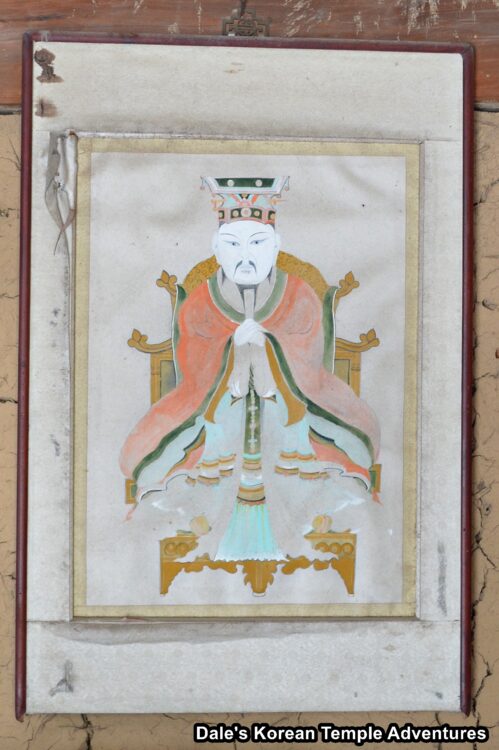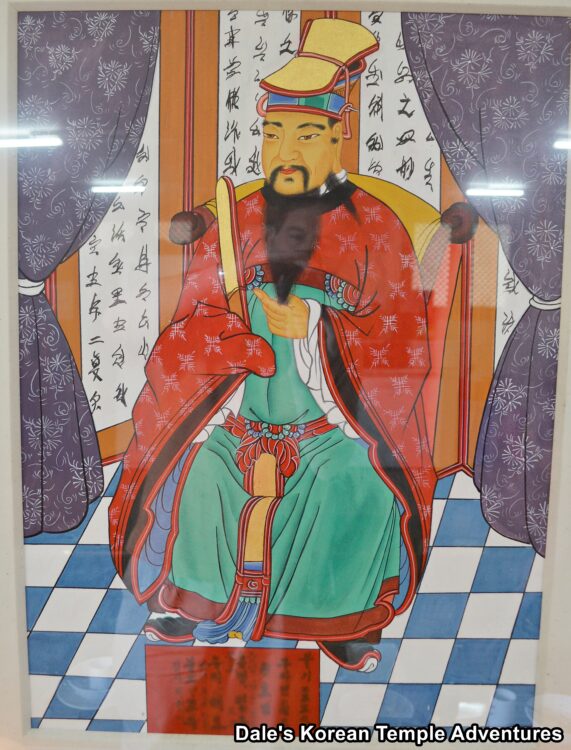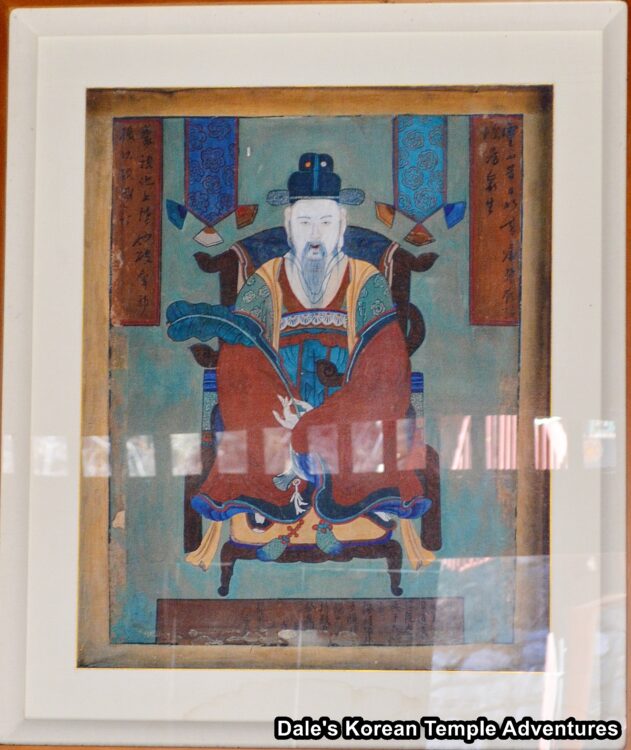Jowang-shin – The Fireplace King Spirit: 조왕신

Introduction
One of the more uncommon figures you’ll find at a Korean Buddhist temple is Jowang-shin, or “The Fireplace King Spirit” in English. I have yet to see a shrine hall dedicated to this shaman deity; instead, where you’ll find Jowang-shin is in the kitchen area of a temple or hermitage. And even then, it’s very uncommon to see this shaman deity. In all of my travels, which includes nearly five hundred Korean Buddhist temples and hermitages, I’ve only come across three Jowang-shin murals. So who exactly is this figure? What’s it supposed to represent? And what do they look like?
The History of Jowang-shin
Traditionally, Jowang-shin was thought of as the shaman deity of fire and the hearth. As a result, Jowang-shin was customarily found inside a Korean home. But over the past several decades, this shaman deity has all but disappeared.
Jowang-shin was worshiped on the Korean peninsula for over a millennium, ever since the Three Kingdoms Period (57 B.C – 668 A.D.). Jowang-shin goes by a few different names. You can hear the shaman deity being referred to as Jo-shin (Kitchen Deity – 조신), Jowang-gakshi (The Woman Who is the King of the Kitchen – 조왕각시), Jowang-daeshin (Great King Deity of the Kitchen – 조왕대신), and Buddumak-shin (Deity of the Hearth – 부뚜막신). All five names for Jowang-shin are used interchangeably.
Traditionally, Jowang-shin was embodied as a bowl of water held on the clay altar above the hearth in a Korean kitchen. The housewife would awake early in the morning and pour fresh water from the nearby well into the bowl that was meant to symbolize Jowang-shin. After doing this, the housewife would kneel in front of the bowl and pray for good luck. Also, during important festivals, Jowang-shin would be honoured with rice cakes and various fruit.
There were five rules that a housewife would have to follow to ensure a happy and prosperous household. They were:
1. Do not curse around the hearth.
2. Do not sit on the hearth.
3. Do not place your feet on the hearth.
4. Maintain a clean kitchen.
5. You can worship other deities in the kitchen.
Jowang-shin would then make known to the heavens what was happening inside the home. If the rules were followed, Jowang-shin would be a benevolent deity. However, if any of the rules weren’t followed or they were broken, Jowang-shin could be a vengeful deity.

Jowang-shin and Korean Buddhism
In Korean Buddhism, Jowang-shin is a shamanic tutelary deity. Inside a Buddhist temple, you’ll occasionally find this deity housed inside the kitchen area. Jowang-shin has a special altar inside the kitchen called a Jowang-dan. You’ll often find a portrait on the wall above the altar depicting Jowang-shin.
The kitchen, traditionally, was seen as being a symbol of the overall prosperity of a home. A good fire signified a prosperous home, while a home without a fire represented poverty because traditionally all meals came from fire. This also translated to a Korean Buddhist temple or hermitage.
As a shaman deity, Jowang-shin is considered a guardian of the dharma. But in the pantheon of shaman deities, Jowang-shin is a minor folk-Buddhist deity behind the more popular shaman deities like Sanshin (The Mountain Spirit), Dokseong (The Lonely Saint), Chilseong (The Seven Stars), and Yongwang (The Dragon King).
What Does Jowang-shin Look Like?
So what exactly does Jowang-shin look like? Jowang-shin is male. He’s typically middle aged, and he sports a long black beard not too dissimilar to the one you’ll find Sanshin (The Mountain Spirit) sporting. Jowang-shin holds his black beard with one hand, while the other is holding a fan or a wooden tablet. Jowang-shin is a king, so he’s dressed in royal clothes. He sits upon a throne. And behind his throne you’ll see banners with Chinese characters written on them. Of note, Jowang-shin’s feet never touch the ground, and his eyes look out towards the kitchen.
Examples
The three examples I’ve found in Korea are all found in the southern part of the peninsula. Two are found on Mt. Cheonseongsan in Yangsan, Gyeongsangnam-do at Anjeokam Hermitage and Wonhyoam Hermitage. The other great example of Jowang-shin can be found at Daewonam Hermitage on the Pyochungsa Temple grounds in Miryang, Gyeongsangnam-do.
Conclusion
Jowang-shin is definitely one of the more difficult shaman deities to find at a Korean Buddhist temple. He can often be confused for Siwang (The Ten Kings of the Underworld). But what sets Jowang-shin apart from the Siwang is his location. Jowang-shin is always found inside the kitchen. So the next time you’re at a Korean Buddhist temple, have a look around the kitchen, if you’re allowed. You might just be surprised to find one of the more obscure shaman deities that takes up residence in and around Korean Buddhist temples and hermitages.
